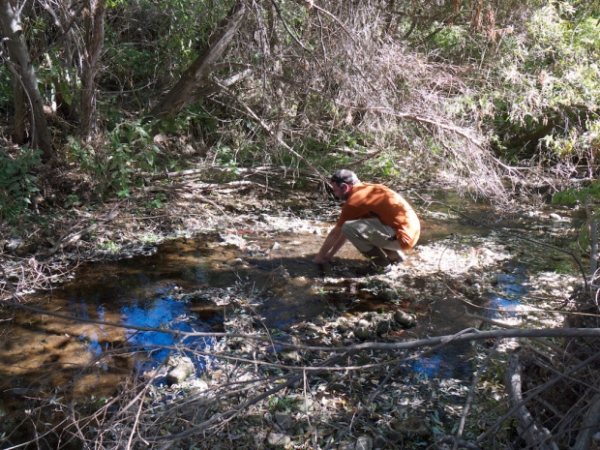Testing the Waters in Malibu Creek
Heal the Bay CEO Ruskin Hartley goes back to school with a weekend trip to Malibu Creek.
Science is cool, but laboratories are cooler. I always enjoyed being in the lab at school. I liked watching chemicals react as they are mixed together. Or recording how the intensity of a laser beam changed when passed through saline solutions of different strength. After many years away, I was back in the lab this weekend with Heal the Bay’s Stream Team. And just as in my school days, the time proved both fun and informative.
Since 1998, scientists and volunteers at Heal the Bay have been monitoring water quality throughout the Malibu Creek watershed. Tracking nutrient and bacteria loads on a monthly basis in more than a dozen different locations. Earlier this year, we released the State of the Watershed report based upon this long-term dataset with detailed recommendations on how to improve water quality throughout the watershed. One thing that is critical is continuing the monthly monitoring work.
I was part of the small team — mostly volunteers — that went out last Sunday to collect and analyze water samples. It was fascinating to be part of the whole process, from field measurement through to the laboratory work. We measured temperature, pH and conductivity in the field and collected samples to determine nutrient loads and bacteria count back in the lab.
It was great to see different parts of the watershed. From the relatively undeveloped headwaters, through the main-stem that flows through neighborhoods, to the lower reaches impounded behind an old dam that is now choked with sediment. But what was really fun was being back in the lab to process the samples. There’s something very therapeutic about the detailed and replicable work to process dozens of samples to unlock their secrets. Adding a little of this and watching the clear water turn to purple to indicate the presence of nitrates. Or diluting the samples and encasing them in plastic pouches so the bacteria can incubate overnight and then be counted.
The results clearly show that how we live on the land has a big impact on the quality of the water. Agriculture, development, roads, sewers, septic – they’re all connected and leaves their markers behind in the water. Water that to the untrained eye looks clean. But the lab tells a different story.
If you’re interested, why not sign up for one of Heal the Bay’s training sessions and become a citizen scientist helping unlock the secrets of this watershed? You’ll be helping out and having a lot of fun at the same time!




